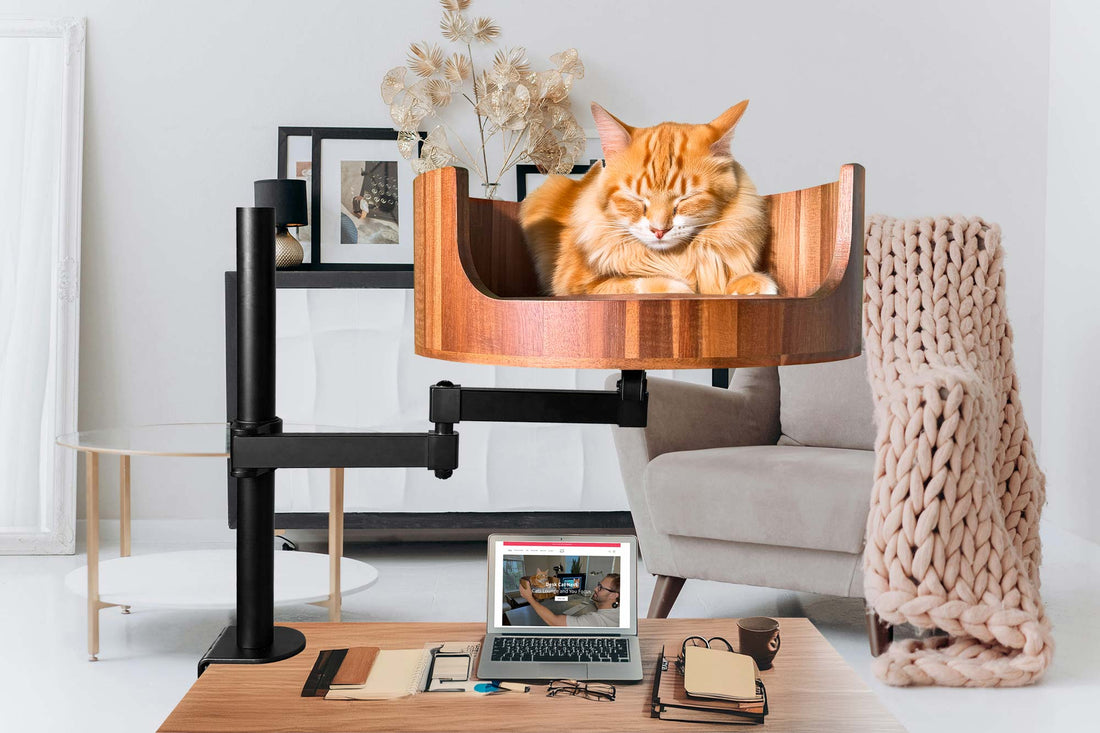
Why Do Cats Eat String? Understanding Their Behavior
Share
Cats are known for their playful and sometimes quirky behavior. One strange habit that some cats have is eating string or other linear objects. This odd behavior can be concerning for cat owners, as ingesting string can lead to serious health issues. In this article, we will delve into the reasons why cats are drawn to string and what can be done to prevent them from indulging in this potentially dangerous behavior.
It is important for cat owners to understand their pet's behavior in order to provide them with a safe and healthy environment. Cats are natural hunters and often enjoy playing with objects that resemble their prey. String, yarn, and other linear objects may trigger a cat's predatory instincts, causing them to pounce and play with these items. However, swallowing these objects can lead to intestinal blockages or other complications. By gaining insight into why cats are attracted to string, owners can take precautions to keep their feline friends safe and happy.
1. Cats are instinctual hunters, and eating string or other linear objects can mimic consuming prey in their natural environment.
2. Kittens are particularly prone to eating string due to their playful behavior and curious nature.
3. Ingesting string or other linear objects can lead to serious health complications, including intestinal blockages.
4. It's essential for cat owners to keep string and similar items out of reach to prevent accidental ingestion.
5. Understanding a cat's behavior and providing appropriate toys and enrichment can help deter them from eating harmful objects.
What is Pica in Cats?
Pica is a condition in which animals crave and consume non-food items, such as string, fabric, plastic, or even hair. This behavior is seen in both dogs and cats, but it is more common in felines. Cats with pica may chew on or ingest string due to various reasons, including boredom, stress, nutritional deficiencies, curiosity, or instinctual behavior.
Risks of String Ingestion
Ingesting string can be extremely dangerous for cats as it can lead to intestinal blockages, which may require surgery to remove. The string can get tangled in the intestines, causing a life-threatening situation. Symptoms of intestinal blockage include vomiting, diarrhea, abdominal pain, lethargy, and loss of appetite. It is crucial to monitor cats closely if they have ingested string and seek immediate veterinary attention if any symptoms arise.
Preventing Cats from Eating String
To prevent cats from eating string, it is essential to provide them with enrichment and mental stimulation. Engage cats in play with interactive toys, rotating toys regularly to keep them interested. Keep string, yarn, and other potential hazards out of reach of cats, storing them in secure containers. If cats continue to exhibit pica behavior, consult with a veterinarian or animal behaviorist to address any underlying issues causing the behavior.
Examples of Cats Eating String
Several cases of cats eating string have been reported, highlighting the potential risks and consequences of this behavior. One such case involved a cat named Fluffy who ingested a piece of yarn, leading to a severe intestinal blockage. Fluffy required emergency surgery to remove the string and make a full recovery. This case serves as a reminder of the dangers of cats eating string and the importance of monitoring their behavior closely.
FAQs for Desk Cat Nest - Why do Cats Eat String?
Why do cats have a tendency to eat string?
Cats have a natural instinct to explore and play with small, moving objects. String or thread may mimic the movement of prey, triggering their hunting instincts. However, swallowing string can be dangerous for cats as it can become tangled in their intestines, leading to serious health issues.
What are the risks of my cat eating string?
When cats ingest string, it can get lodged in their digestive tract and cause a condition known as a linear foreign body. This can lead to serious health complications like intestinal blockages, which may require surgical intervention to resolve.
How can the Desk Cat Nest help prevent my cat from eating string?
The Desk Cat Nest provides a safe and enclosed space for your cat to play and explore without the risk of swallowing dangerous items like string. With various interactive toys and no loose strings, your cat can satisfy their natural hunting instincts in a controlled environment.
Are there any specific toys in the Desk Cat Nest that can help redirect my cat's string-eating behavior?
Yes, the Desk Cat Nest comes equipped with a variety of interactive toys such as feather wands, catnip mice, and laser pointers, which can help redirect your cat's attention away from string and onto safer play options. These toys are designed to engage your cat's senses and keep them entertained in a non-harmful way.
In conclusion, providing your cat with a Desk Cat Bed is a valuable choice to help prevent them from eating string. The elevated design of the bed keeps strings and other potentially harmful objects out of reach, reducing the risk of ingestion and potential health issues. Additionally, the cozy and comfortable design of the bed offers a safe and inviting space for your cat to relax and play, further reducing their desire to seek out foreign objects to chew on. By investing in a Desk Cat Bed, you can provide a safe and secure environment for your feline friend to thrive in.



















































